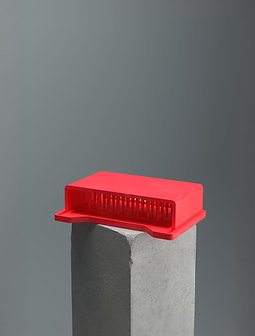1 day ago2 min read
3 days ago4 min read
5 days ago5 min read

Updated: May 5

Imagine your body as a bustling metropolis. Day and night, countless cellular "workers" go about their tasks, maintaining infrastructure. But what happens when disaster strikes – a wound, like a bridge collapsing during rush hour? Chaos ensues, and immediate repair is critical. This is where the body's emergency response—wound healing—kicks in, powered by cell migration. Cellular workers must navigate to the site, clean up, and rebuild, guided by biochemical "traffic signs." Efficiently managing this process is key, making the study of cell migration in wound healing crucial.
Just like a city relies on different teams, wound healing involves specialized cells rushing to the scene:
Macrophages (Cleanup Crew): Clearing debris and signaling others.
Fibroblasts (Construction Workers): Laying down new foundations.
Endothelial Cells (Road Pavers & Utility Liners): Forming new blood vessels.
Keratinocytes (Resurfacing Team): Closing the surface.
Directing these crews efficiently is paramount. Delays, like traffic jams, can lead to poor healing outcomes.

How do scientists observe this cellular "traffic" in the lab? They often use in vitro assays like the traditional scratch assay. This 2D cell migration assay involves creating a gap in a cell layer and watching cells migrate to close it—a basic wound closure assay.
However, imagine analyzing city traffic using hand-drawn maps with inconsistent roadblocks. Manual scratch assays often suffer from:
Lack of Standardization: Manually creating the "scratch" leads to variations in width and quality, much like drawing inconsistent detour routes. This makes comparing results difficult.
Poor Reproducibility: Getting the same results twice can be challenging, hindering the development of a truly reproducible scratch assay.
Potential Inaccuracy: The scratching itself can damage cells or the surface they move on, creating misleading "traffic reports."
These limitations create a bottleneck, highlighting the urgent need for a reliable scratch assay alternative – essentially, a truly standardized cell migration assay.
Just as standardized traffic signals are essential for a functional city, biological research demands standardized tools for reliable insights. To truly understand if a potential therapy acts as an effective "traffic controller" for migrating cells, researchers require an accurate wound healing assay. This means assays must be:
Standardized: Ensuring identical starting conditions every time.
Accurate: Reflecting true cell behavior without artifacts.
Reproducible: Providing consistent data across experiments.
This is where innovations like CLYTE's CellCut 3.0 provide a significant upgrade. CellCut 3.0 allows researchers to use a simple and precise tool to perform cell migration assays with unprecedented speed and consistency:
Standardization & Precision: CellCut creates extremely precise, clean, and identical gaps in seconds. This delivers the standardized cell migration assay researchers need, eliminating variability.
Reproducibility & Accuracy: By ensuring consistency, CellCut 3.0 provides a platform for a highly reproducible scratch assay yielding more trustworthy data on cell migration dynamics.
Efficiency: This expedited approach streamlines the 2D cell migration assay process, saving valuable research time.
Understanding and optimizing the journey of cellular workers is fundamental to improving wound healing. While the city analogy helps visualize the process, reliable scientific progress depends on robust tools. Traditional methods, while conceptually simple, lack the rigor needed for definitive conclusions.
By enabling a highly standardized cell migration assay, advanced platforms like CLYTE's CellCut 3.0 allow researchers to generate the accurate wound healing assay data needed. This empowers scientists to move beyond estimations towards precise measurements, accelerating the development of therapies that help our internal "cities" recover from damage more effectively and efficiently than ever before.

